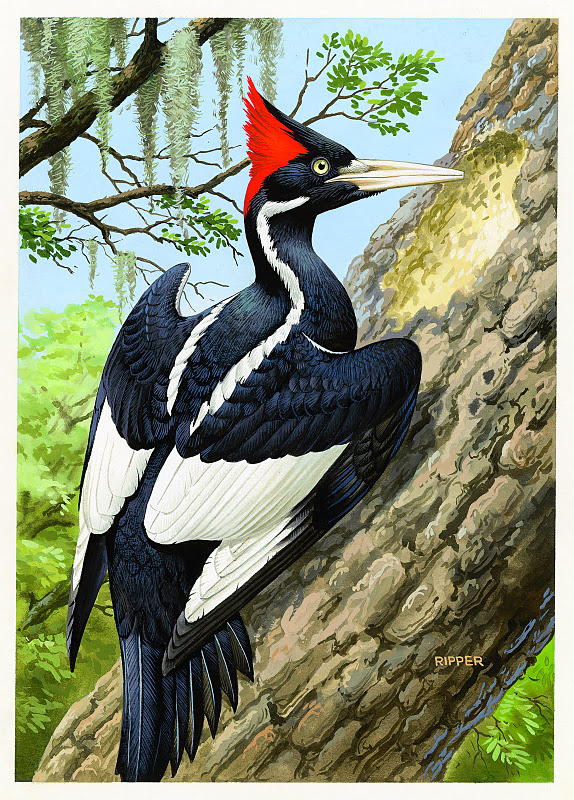
Campephilus principalis
SUBFAMILY
Picinae
TAXONOMY
Picus principalis Linnaeus, 1758, based on Mark Catesby’s drawing
of the “Largest White-bill Woodpecker” from South Carolina.
Two subspecies recognized.
OTHER COMMON NAMES
French: Pic а bec ivoire; German: Elfelbeinspecht; Spanish:
Carpintero Real.
PHYSICAL CHARACTERISTICS
18.5–21 in (47–54 cm); 15.5–18.3 oz (440–570 g). A very large,
black woodpecker with white lines extending down the neck on
each side to the upper base of the wing, white secondaries and
inner primaries, a very robust, chisel-tipped, ivory-colored bill;
male has a pointed crest that is black in front and scarlet behind;
female has a longer, more pointed, somewhat recurved
solid black crest.
DISTRIBUTION
C. p. principalis formerly found in southeastern United States
from eastern Texas to North Carolina and north to southern
Illinois and southern Ohio; C. p. bairdi formerly in forested
areas throughout Cuba. Most recent known populations are
from northeastern Louisiana, Florida, and northeastern Cuba.
May now be extinct, though continued unverified reports in
southeastern Cuba, southeastern Louisiana, and Florida provide
hope.
HABITAT
Extensive old-growth forest, especially bottomland forest, but
also pine uplands in both the United States and Cuba; habitat
losses resulted in last North American populations being in
bottomlands and last Cuban populations being in upland
pines.
BEHAVIOR
Wanders over a home range of 6 sq mi (15.5 sq km) or more;
perhaps somewhat social, often seen in family groups; characteristic
call is a plaintive, single- or double-note nasal tooting
that has been likened to a child’s “tin horn” and that can be
mimicked by blowing on a clarinet mouthpiece; mechanical
sound produced is a hard single pound on a resonant surface
followed immediately by another such that the second sounds
like an echo of the first. This mechanical sound is characteristic
of Campephilus woodpeckers and is called the “double
rap.”
FEEDING ECOLOGY AND DIET
Visits recently dead trees and with its heavy, chisel-like bill,
knocks large slabs of bark from the tree to reveal subsurface
arthropods. Feeds extensively on the larvae of large wood-boring
beetles, especially Cerambycidae; also takes other arthropods
and fruit in season.
REPRODUCTIVE BIOLOGY
Monogamous; known to breed from January through April in
North America and March through June in Cuba, but few data
are available. Nest cavity is in a large dead tree or in a live tree
with extensive heartrot. Recorded nests have been 24–50 ft
(7.3–15.2 m) up; cavity entrance typically taller than wide, but
shape varies. Clutch 2–4 eggs; incubation by both parents; incubation
period and age at fledging not known; young may remain
with parents until next breeding season.
CONSERVATION STATUS
Critically Endangered by all criteria; may be extinct. The major
factor leading to current status has been loss and fragmentation
of old-growth forest, but other factors have been
nineteenth century killing of birds by scientists, amateur collectors,
Native Americans, and hunters, and probably more recent
limitation of natural fire. In North America, confusion
with the similar-sized and similar-appearing pileated woodpecker
(Dryocopus pileatus) leads to many false sightings.
SIGNIFICANCE TO HUMANS
Bills and scalps of males were culturally important to Native
Americans, apparently symbolic of successful warfare. They
were often used to decorate war pipes and medicine bundles
and were widely traded outside the range of the species. Early
Europeans in North America also killed the birds for their
bills and used them for such things as watch fobs. In the late
1800s, there was a brisk trade in skins and eggs among private
and professional collectors. In both the United States and
Cuba, ivory-bills were occasionally eaten. The ivory-bill has
become symbolic of rarity. Collector prints, ceramic ivorybills,
trade cards with ivory-bills on them, and use of ivorybills
in advertisements have drawn much attention to the
species.
Photo Gallery of - Ivory-billed woodpecker
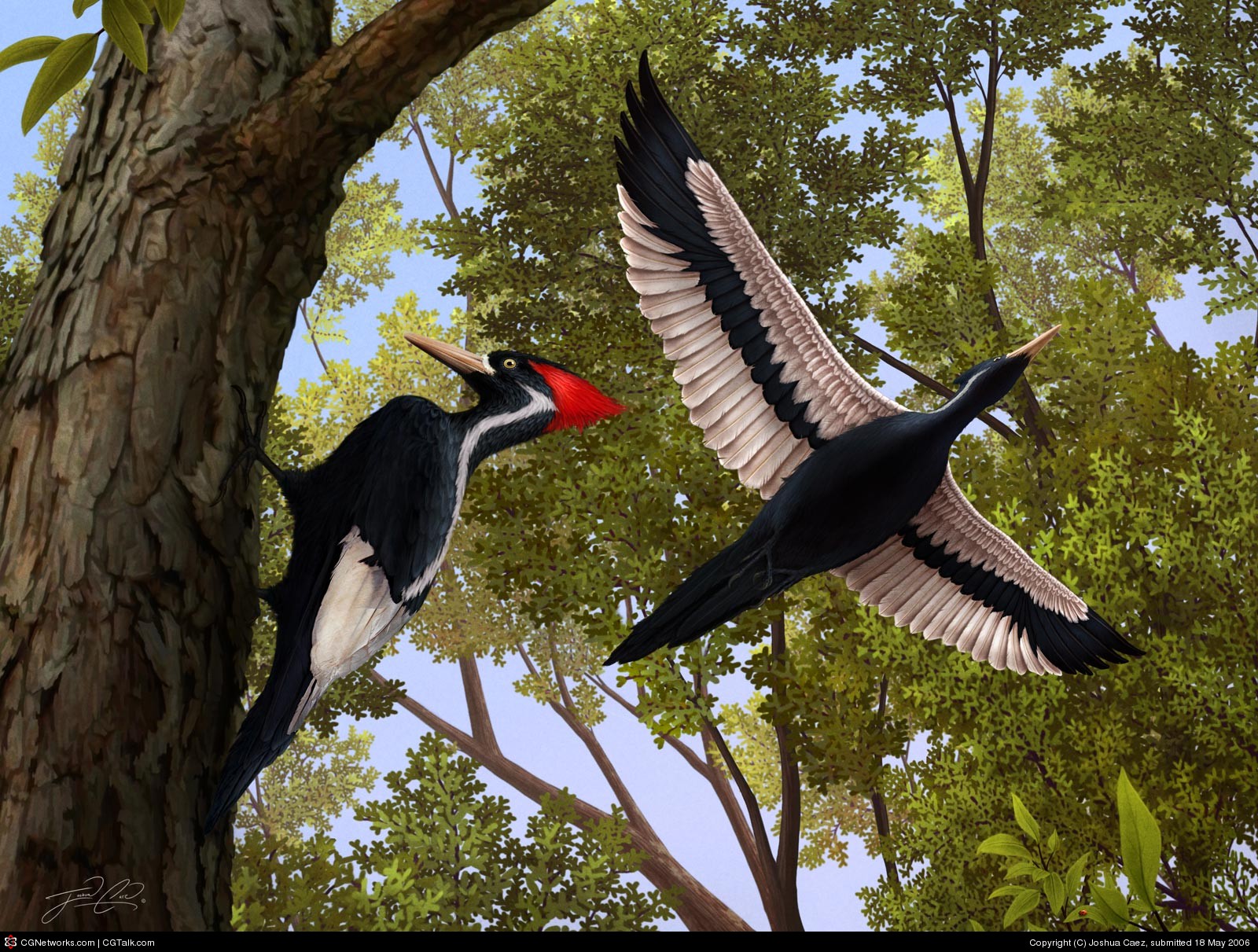
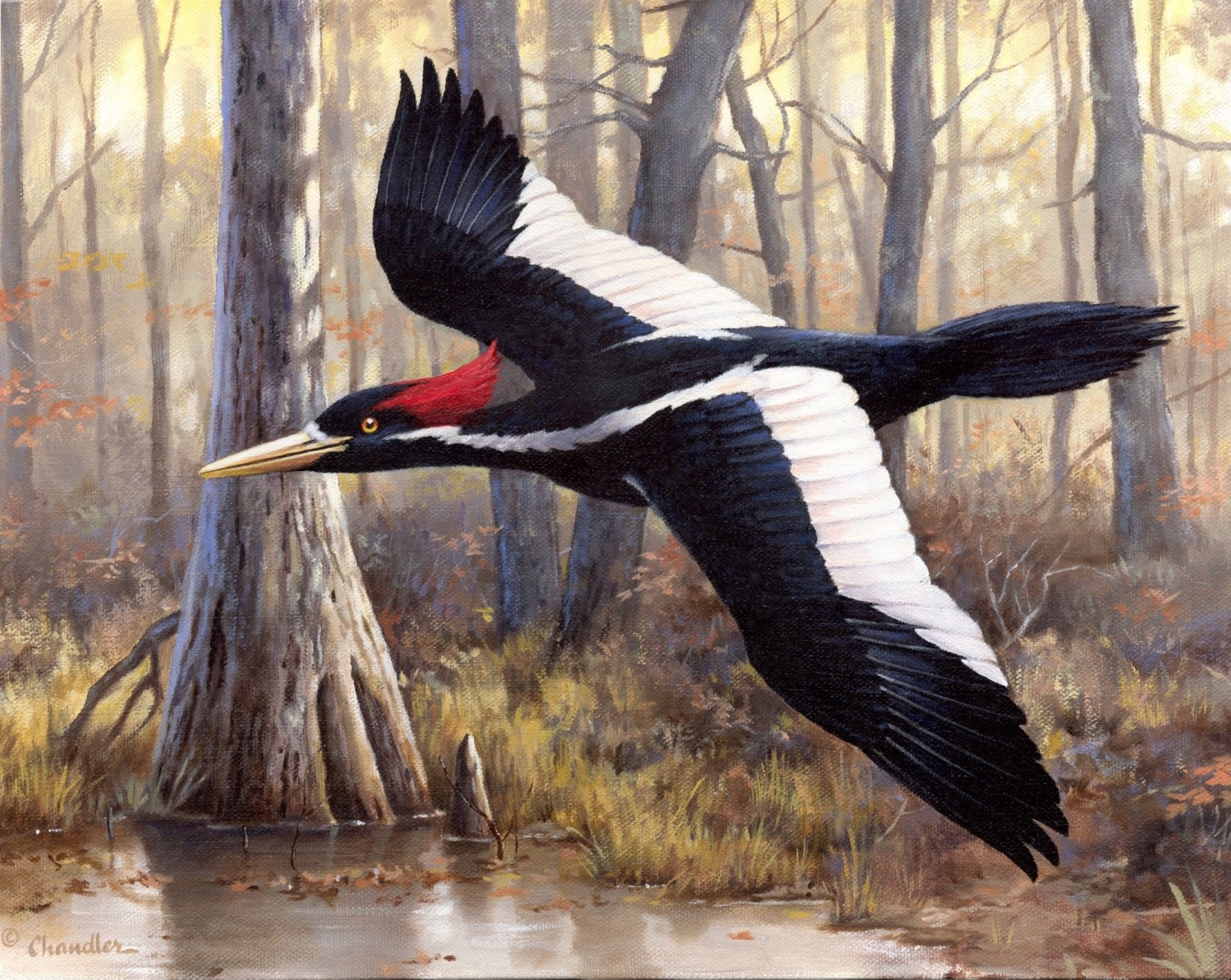
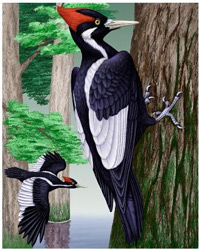
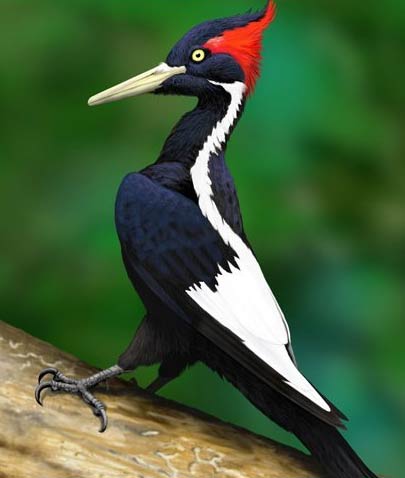
 Animalia Life
Animalia Life